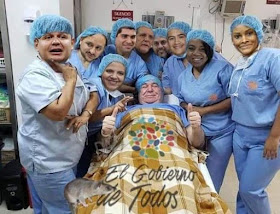Sep 21, 20/20 🛢️💵💳⚖️ 'Political Risk Analysis: What’s Ahead For Ecuador’s Economy In 2021?-
"Ecuador was the first country in Latin America to experience a significant outbreak during the global Covid-19 pandemic. The country has been hit hard both by the virus itself and by the disruption caused by efforts to contain its spread. After growing by only 0.1% in 2019, Ecuador’s GDP is expected to contract by 8.7% in 2020.
Meanwhile, the country’s embattled president, Lenin Moreno, has an approval rating of under 10%. With a presidential election on the horizon in 2021, Ecuador is at a crossroads. Ecuador’s economy is expected to bounce back in 2021, but the country’s next president will still need to rally support for reforms to the way pensions and state-owned enterprises are managed, and continue to look for ways to diversify exports. In 2019 oil accounted for over a third of Ecuador’s export income.
Encouraging investment and growth in new sectors will be essential for creating jobs and generating additional tax revenue. Foreign investors and executives doing due diligence on potential investment projects in Ecuador need to understand the country’s evolving political risk profile.
To discuss the current dynamic in Ecuador, I reached out to Sebastian Hurtado, the president of PRóFITAS, a political risk consultancy based in Quito, the country’s capital city.
Nathaniel Parish Flannery: Ecuador was in the news for being one of the first countries in Latin America to be hit hard by the coronavirus contagion. Where do things stand now?
Sebastian Hurtado: If you look at public records for total deaths in the first 6 months of 2020, half of the 28,000 excess deaths occurred in April, with over 12,000, an increase of over 300%, occurring in Guayas province, the original epicenter of the pandemic. Since then however, in May and June deaths fell dramatically at a national level as the pandemic subsided in Guayas, most likely due to a certain level of immunity achieved in that region and protective measures. In July, deaths began to rise again as the virus advanced in other regions, including the capital, Quito, however, they stabilized in August.
The government responded to the virus initially through a strict two-month national lockdown in mid-March and the implementation of social distancing measures. Although the response was too late in Guayas, it has been successful in preventing the recurrence of the disaster scenario in the province, which made international headlines due to grim photos of bodies left in streets of the province’s capital, Guayaquil. The effect of these measures is that the curve of cases in other cities, notably the capital, Quito, has been much less steep, with the virus spreading slowly which has mitigated the strain on the health system.
On
the other hand, Ecuador has struggled to develop adequate testing and
tracing infrastructure, limiting its ability to limit the virus’ spread
further and raising worries about how recurring outbreaks can be
effectively contained. Furthermore, as is the case in many developing
countries, inadequate living and working conditions make social
distancing difficult, providing ideal conditions for the virus to spread
and further complicating the work of tracing teams......." -
https://www.forbes.com/sites/nathanielparishflannery/2020/09/21/political-risk-analysis-whats-ahead-for-ecuadors-economy-in-2021/?fbclid=IwAR0ub0vuaVux2wn6A4tRxKapF-iRLfZe9VyAUdrJUe9axhswcuzVZoo3AmY#c3d8d9054459



No comments:
Post a Comment